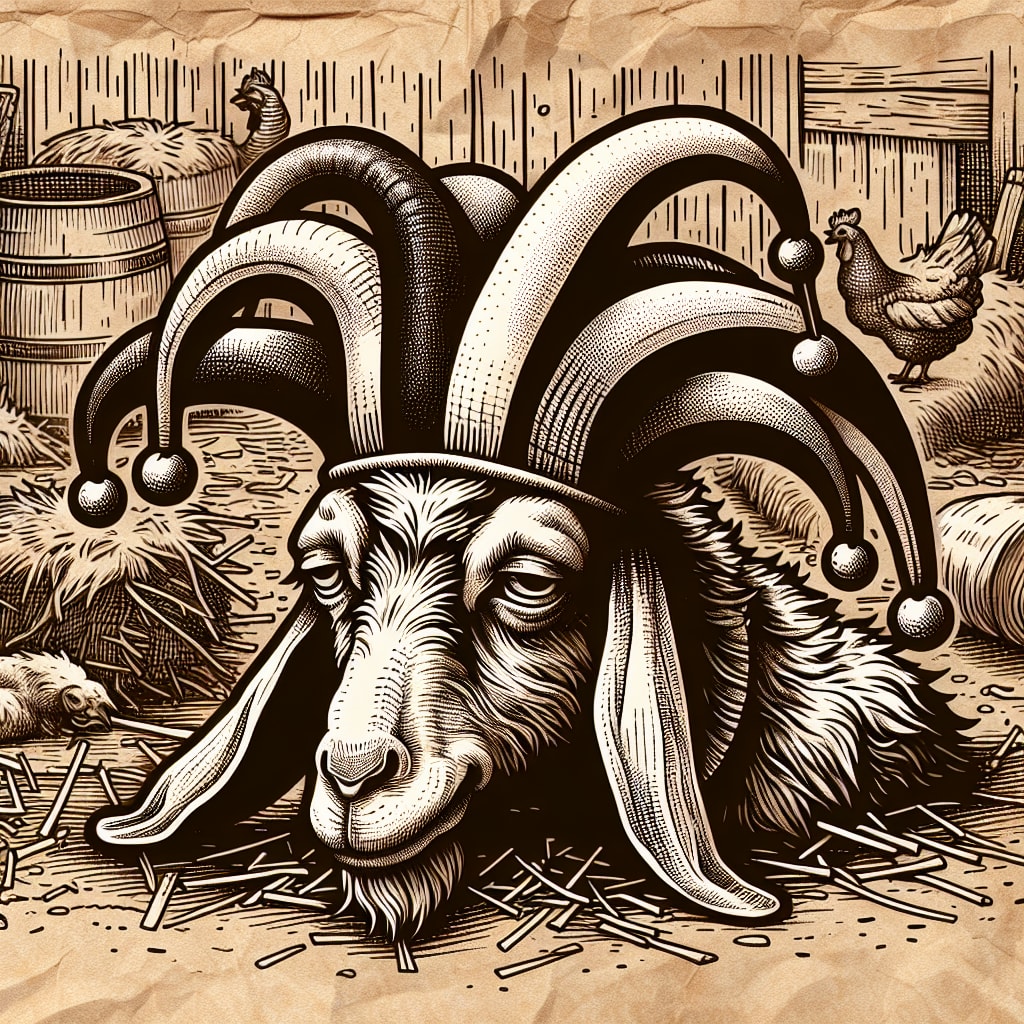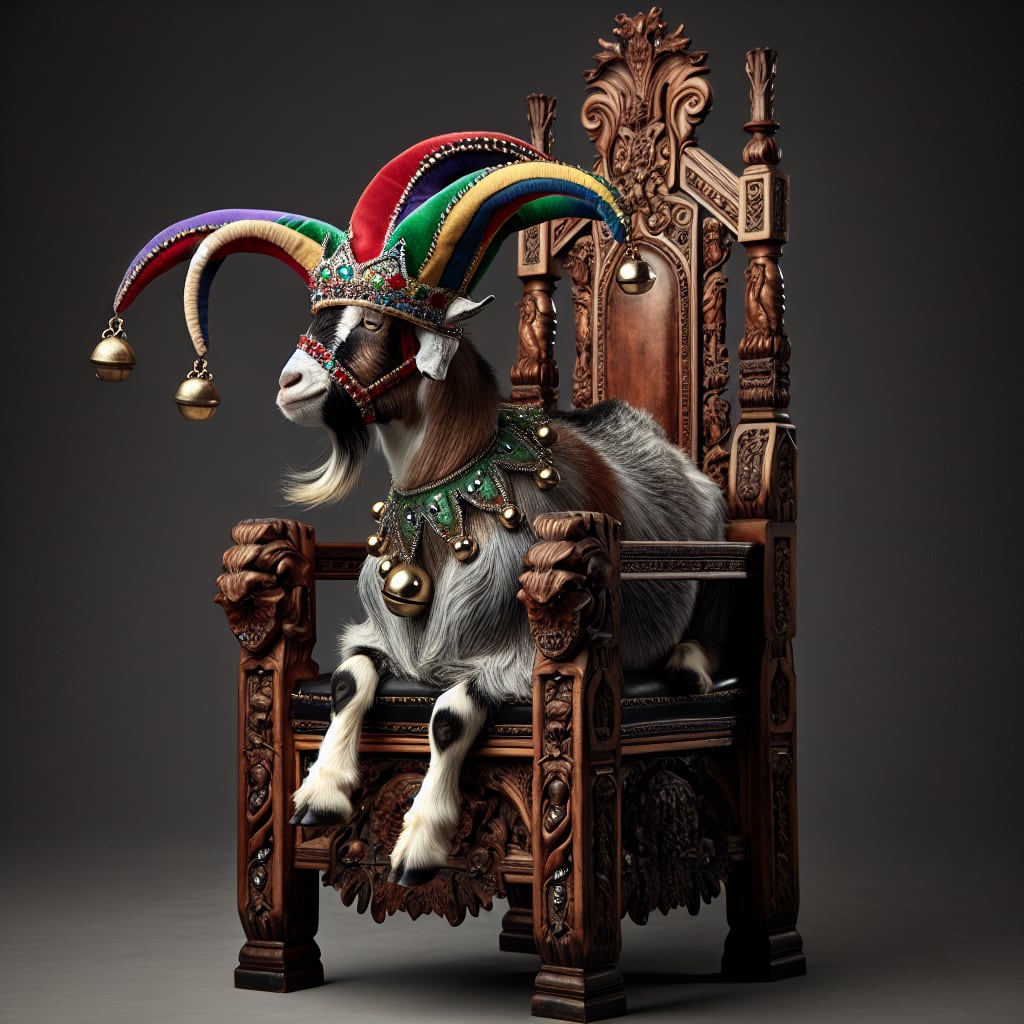🐐April Goat Fool 61
10Wow, what a month, huh?

I’ve previously said I would explain a few things, but didn’t ever get to it during my official reign.
I’m pretty sure that if I put if off any longer, it’ll never happen.
Not that I owe you guys anything, but I’ll feel a little more complete if I wrap this up. I’ll also get to check off another item in Habitica.
1 — I’ve been a goat my whole life
I was born a Capricorn ![]() ︎, which of course is the [western] zodiac sign of the goat
︎, which of course is the [western] zodiac sign of the goat ![]() . (By the Chinese zodiac, I’m the rooster
. (By the Chinese zodiac, I’m the rooster ![]() — just two years off of being doubly goat.)
— just two years off of being doubly goat.)
“But so what?” you probably say. Or rather, “Meh?”
Okay, so that doesn’t make me any goatier than about a twelfth of everybody here, probably.
(The general population is not spread exactly evenly across the zodiac, but it’s pretty close. More importantly, Mehtizens are just a sample of the total population, which will mess up the accuracy even more. So “about a twelfth” is as accurate as I care to estimate.)
More meaningful than my zodiac sign: as a toddler I was nicknamed “Pukki” by my family. It’s a Finnish word meaning “billy goat” and they called me that because I climbed everything.
(Pukki is pronounced like Pooky, Garfield’s teddy bear.)
As an aside, the “Finnish Santa” is called “Joulupukki” (“Yule Goat”) and was originally not the jolly Santa we know now. Traditions have shifted over time so now Joulupukki has basically become the Finnish name for Santa. He travels on a sled or sleigh pulled by reindeer (which are a regular animal in Finland), but they don’t necessarily fly. (Although this particular video shows flight… ¯\_(ツ)_/¯ )
2 — Pronouncing xobzoo
Fast-forward a couple decades to my next name of interest: Xob Zoo. I got that from a Hmong community I spent some time with. Most accurately it’s pronounced [sɔ́ ʐɔŋ], but more Englishly I would write it “Saw Zhong.” Hmong is a tonal language; my name has a high tone (marked by b) in the Xob/Saw, and a neutral tone (marked by the absence of a tone marker) in the Zoo/Zhong.
Of course, this simplification assumes that you will recognize “zh” as the sound the S makes in “vision” or “treasure” (or J in French).
I don’t expect anybody to pronounce the tones, even once they’re aware of them. And I’m used to people saying “zob zoo” if they have occasion to say it out loud. Ultimately, it’s okay if you pronounce it wrong; I know it’s not a natural word/name for most people.
As an aside, I’ve always felt the standard Hmong Romanization is kinda broken. At least, there are some things I would have assigned differently if I had been in charge of making it. For example, I think X and S are swapped (since X sounds like english S, and S sounds similar to English SH). But if it were done “right” (according to me), people would probably call me “S.O.B. zoo” or “sob zoo” (both of which sound more wrong than “zob zoo”).
I’m rambling now, so it’s time to move on.
3 — Spoon is all you need?
Less than a week before my coronation…

Mediocrebot shared the “Spoon Is All You Need” video. At just 10 seconds into that video there are two dubious claims made:
- “knife cannot scoop ice cream”
- “fork cannot eat soup”
I challenged those unnecessarily belittling claims, for which I was ostensibly nominated as the king goat fool.
If I was a proper goat that kept up on my duties, I would have more (and better) pictures to go along with this, but you get what you get (and you don’t throw a fit).
First, knives can be used for ice cream. I immediately thought of a prime demonstration for that, and as luck would have it, an example occurred during my reign as goat! One of my kids had a birthday and we made an ice cream cake for him (nothing like this other Red Velvet Ice Cream Cake). Here is a lousy picture from when we were cutting and distributing ice cream with a knife:

(If you think you notice the tip of the knife missing, I want to assure you that’s not the ice cream’s fault. That’s from when one of the other kids was too impatient for a tub of frozen applesauce to thaw out, and he thought it would be brilliant to stab it with the largest sharp knife he could find. I’m not bitter about it. We pretend he’s smarter than that now.)
Okay, so that’s one. But what about the other? How can a fork possibly be used for soup? Ramen. On top of that, chopsticks can even be used (and are traditional). In fact, in many cases a fork or chopsticks are better than a spoon for ramen (or pho). No need to be exclusionary about it.
(This is another spot where I would’ve added a picture demonstrating usage of a non-spoon utensil, but I’ve been too lazy to take a picture of my own, and even too lazy to bother searching for one online. And I’m afraid I’ll get too distracted if I try generating one with /showme. I also assume that everyone has seen ramen eaten with chopsticks or at least a fork.)
As another fun aside, the Hmong language has a part of speech called a “classifier” which I think is really useful. I don’t know how many languages have classifiers (they’re somewhat common in southeast Asian languages), but English is not one of them. (ASL does have them, but they’re possibly not quite as robust as in Hmong.) They function partly like articles (a/an/the) and partly like reverse-prepositions and partly like pronouns. I know, that’s confusing. At times it sounds needlessly complex, but it simplifies a few things, too.
For example, there is a classifier for “tools” or “things with a handle and held in the hand” (e.g. scissors, knife, gun, musical instruments), and another classifier for pairs. When using the “tool” classifier, a fork is a fork. When using the “pair” classifier, a pair of forks is actually a pair of chopsticks. Cool, isn’t it?
There are actually very few cases where swapping out the classifier changes the meaning, but fork↔︎chopsticks is one of them. And chopsticks came first, so it’s actually “a chopstick is a fork, and a pair of chopsticks is chopsticks.” And there are also other words that can mean “fork” — but I like my example, so it’s staying in.
There’s so much more I could say about how classifiers are used, but I’ve already accomplished the point I was introducing them for. Eating soup with a fork or with chopsticks is roughly equivalent, right? (in that both are non-spoons and neither carries liquid very well) Okay, that’s a bit of a stretch for excusing that large side trek, but it was fun (for me).
TL;DR
- full goat ⇒ born a Capricorn, raised a Pukki (the goat portion of Santa Claus)
- pronounce
xobzoo⇒ “Saw Zhong” - spoon is all you need ⇒ but knife and fork are no slouches, either
I intended to spread this out into at least 3 posts during my reign, but I failed. I blame the goat for that.
- 4 comments, 3 replies
- Comment
Thank you.
Very enlightening!
Oh you do habitica? I was really into it for a while, I even ran a reasonably good guild for a while. It’s a fantastic “game”!
@DLPanther Yep. I’m sad they took the guilds away. Or annoyed. Or disappointed. Something unpositive.
It doesn’t change the fact that I make to-do lists just fine but forget to look at them before starting. But it makes me do a little better at it, since I check in [almost] every day. So I’ve at least had a reminder of the things I didn’t do today.
I’m surprised no one has said anything about the K-pop in the middle.
Fwiw, that was
audience reaction to being rickrolled with k-pop music.